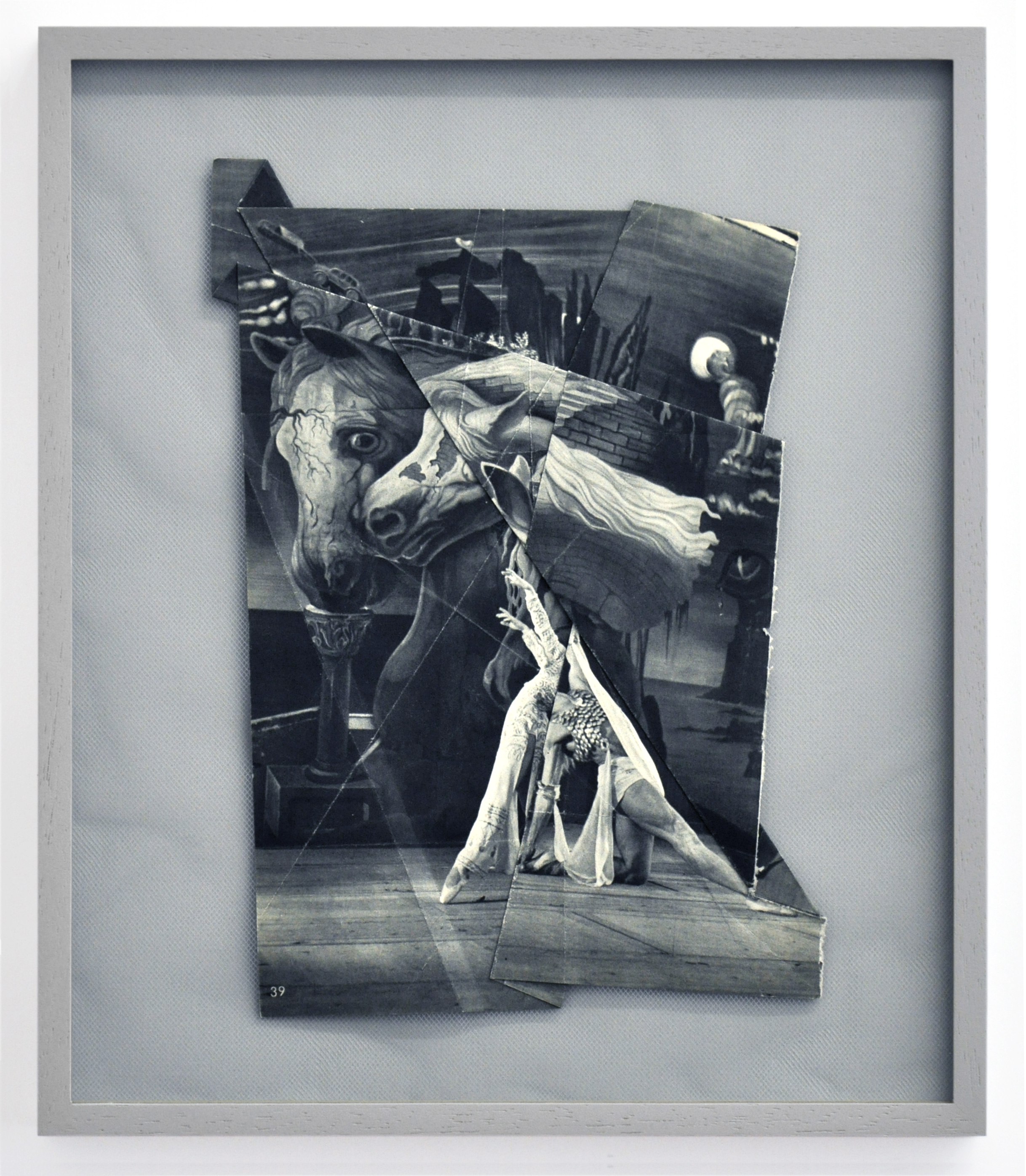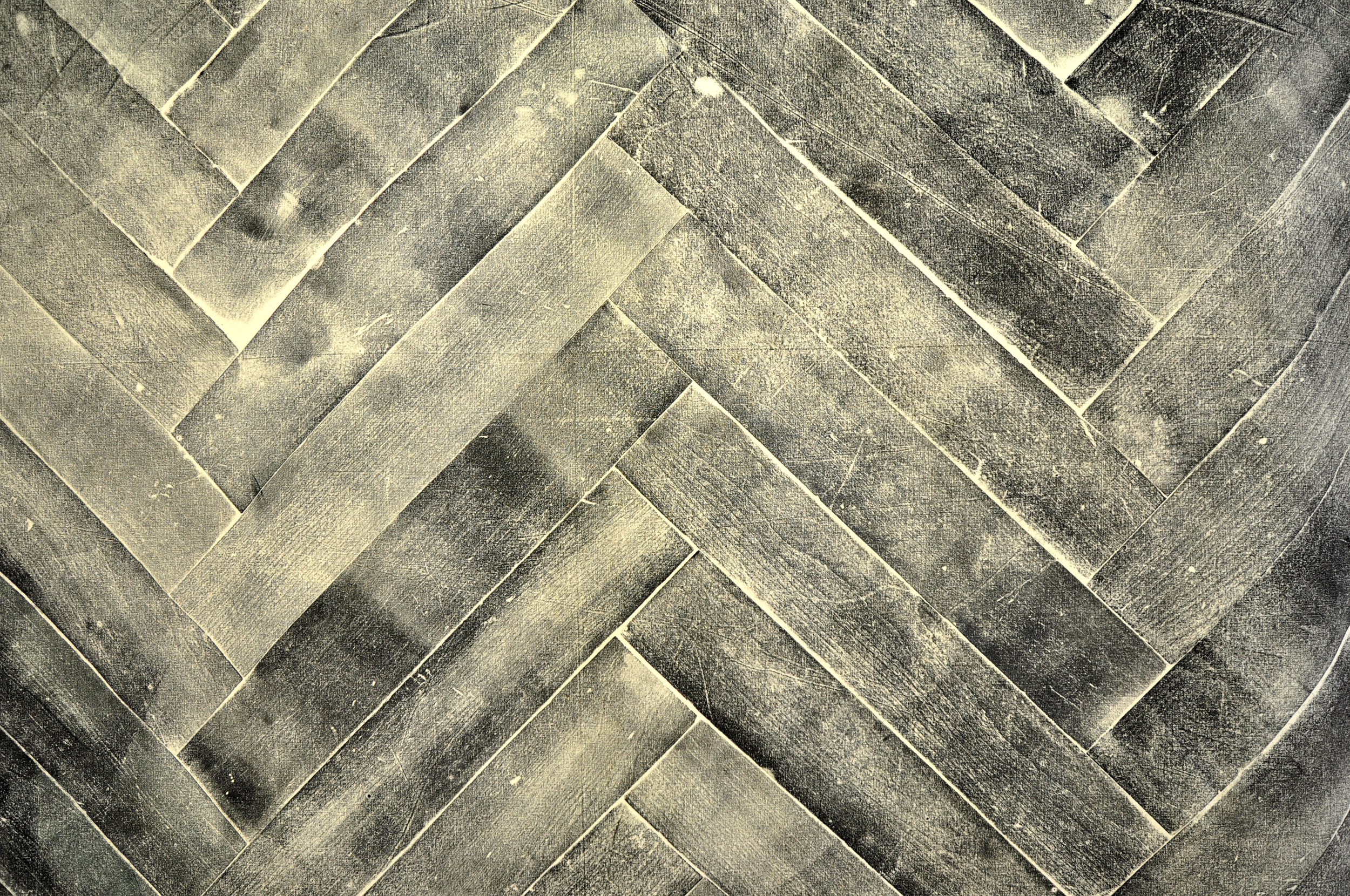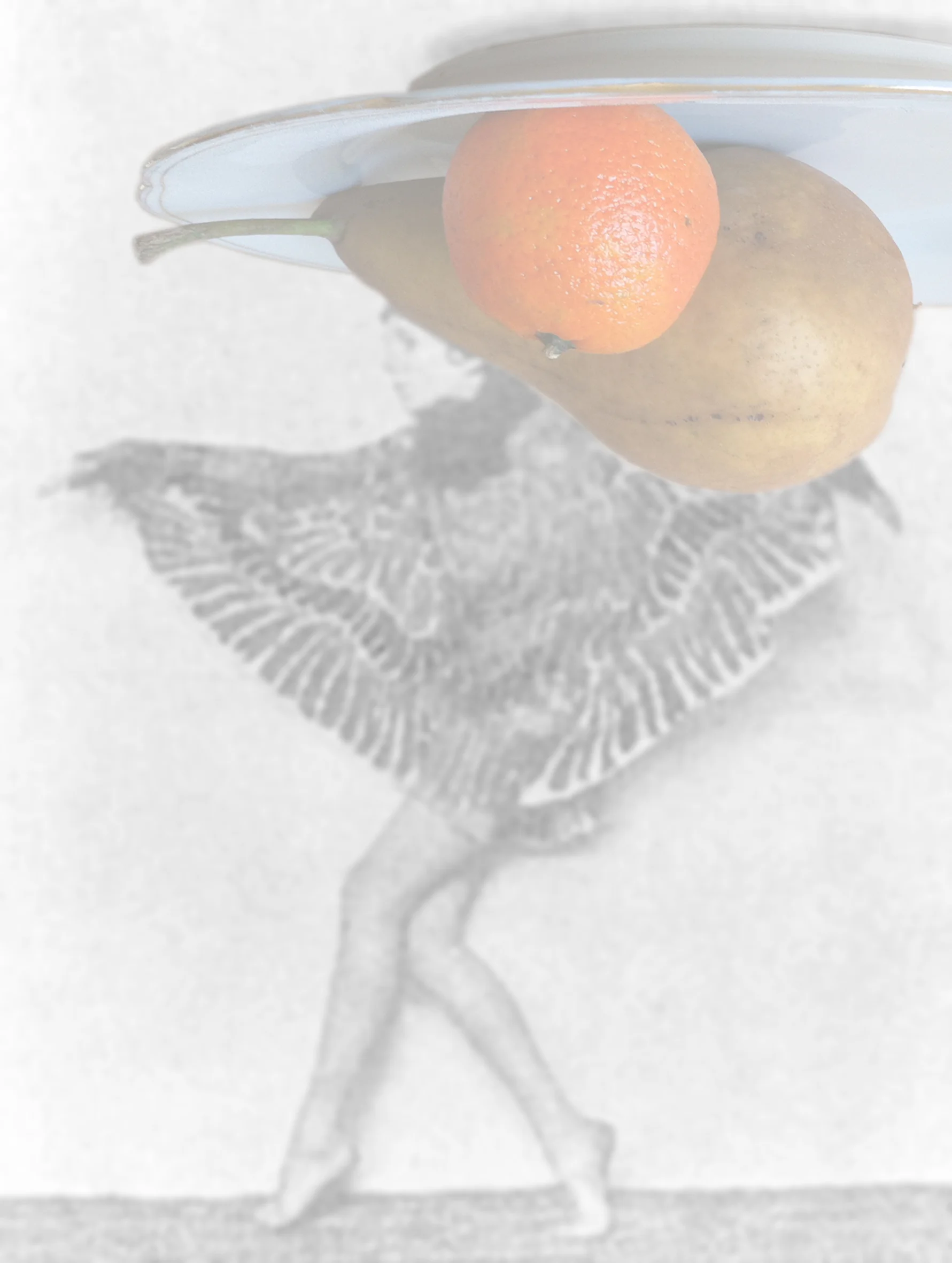If it was so, it might be; and if it were so, it would be; but as it isn‘t, it ain‘t.
29.März – 19. Mai 2012
Judith Welter
In ihrer zweiten Einzelausstellung in der Galerie Abbts Projects zeigt die Zürcher Künstlerin Gabi Deutsch (*1973) eine Serie neuer Arbeiten, welche die Pole und Möglichkeiten von Bewegung und Stillstand umkreisen. Deutsch bearbeitet unterschiedlichste Materialien, darunter auch gefundene und gebrauchte Gegenstände zur Anfertigung von Collagen, skulpturalen Werken und Rauminstallationen. Im Zentrum ihres Schaffens steht ein auf den ersten Blick unsichtbares Netz an Bezügen, das Gegenstände, Objekte, Bilder oder Installationen zu einem Gesamten fasst. Die fragmentarischen Elemente und unterschiedlichen Blickwinkel setzen sich zu verschiedenen möglichen Narrationen zusammen. Als Grundlage ihres Referenzsystems dienen Verweise auf Kunst- und Designgeschichte, Zitate aus Literatur und Populärkultur, aber ebenso werden persönliche Erinnerungsfragmente mit eingeflochten. Deutsch untersucht in ihrem Schaffen Formen der Abstraktion und Übersetzung, indem sie die Potentiale des Materials, seiner Struktur und seiner Umformungen auslotet und die Prozesshaftigkeit sichtbar werden lässt. Aus Einzelteilen wird ein Ganzes konstruiert; aus Überlagerungen und Übermalungen entstehen Collagen, aus durch physische Materialbearbeitung entstandenen Abdrücken werden Bilder. Objekte, die an Relikte auf einer verlassenen Bühne erinnern, arrangiert Deutsch zu fragmentarischen Räumen. Alltäglichen und bekannten Gegenständen und Materialien werden durch diese Prozesse neue Bedeutungspotentiale zugeschrieben.
Die in der Ausstellung gezeigten Werke bilden sich aus der Bewegung und Spannung des Materials und loten dessen transformatorische Potentiale aus. Ein Körper wird je nach Bearbeitung, Faltung oder Perspektive vom festen zum bewegten oder vom leichten zum schweren Objekt. Auf die Frage nach den Blickwinkel spielt auch der Titel der Ausstellung an, der eine Passage aus Lewis Carolls’ Through The Looking-Glass aufnimmt. Die Veränderung der Perspektive eröffnet im bekannten Roman den Eintritt in die Logik einer fantastisch-absurden Welt. Für die Collagen-Serie Venus in Furs verwendet Deutsch Fotografien aus alten Ballettzeitschriften, aus denen sie mittels verschiedener Faltungen und Applikationen auf einen Hintergrund neue Bilder schafft – es sind fragmentierte Körper, welche die dem Tanz eigene Balance zwischen Körperspannung und natürlicher Gegenbewegung deutlich machen. Die Skulptur I’ll Be Your Mirror ist ein visuelles Zitat des Covers der deutschsprachigen Ausgabe von Slavoj Žižeks philosophischem Werk Parallaxe (2006). Der Titel verweist auf das Phänomen der scheinbaren Änderung der Position eines Objektes, abhängig vom Blickwinkel und der Position des Beobachters. An der Wand hängt ein mit All Tomorrow’s Parties betitelter Abdruck eines gebrauchten Parkettbodens auf Stoff. Die auf dem Boden gut sichtbaren, durch die Benutzer verursachten Spuren der Zeit erlangen durch die Abstraktion eine neue Form der Präsenz. Eine zentrale Rolle besetzen zudem die kommentierenden oder auf Referenzen verweisenden, poetischen Titel – im Falle der hier vereinten Arbeiten zitieren sie allesamt Songtitel aus dem gleichnamigen Debutalbum von The Velvet Underground & Nico.
If it was so, it might be; and if it were so, it would be; but as it isn‘t, it ain‘t.
March 29 – May 19 2012
Judith Welter
In her second solo-exhibition in the gallery ABBT Projects the Zurich artist, Gabi Deutsch (*1973) shows a series of new works, which revolve around the poles and the potential of stills and motion. Deutsch works with the all kinds of materials. She also incorporates found and used objects into her collages, sculptures and room sets. In the centre of her work we will discover a seemingly invisible network of relations which links up objects, pictures or installations to a whole. The fragmentary elements und different kinds of perspectives allow for various narratives. Her system of references is based on links to the history of art and design, quotations from literature and pop culture. She also introduces fragments of her own personal memory. In her work Deutsch explores different ways of abstraction and translation by investigating the potential of the material, its structure and its various transformations which allow to make appear the metamorphosis. Various single units build a whole; she creates collages by overlapping layer and painting techniques and pictures with imprints resulting from physical material processing. Deutsch arranges objects reminding us of relics on an abandoned stage to fragmentary room sets. Through these processes well known everyday objects receive new signifying potential. The works exposed in this exhibition are brought to life through the motion and tension of their materials and thus explore the limits of their transformational potential. Depending on its processing, its way of folding or perspective an object can change from light to heavy or from being static to being in motion.
The titel of the exhibition refers to the question about perspectives and quotes a passage from Lewis Caroll’s Through The Looking-Glass. In this famous novel the change of perspective opens the door to the logic of a fantastic and absurd world. For her series of collages Venus in Furs Deutsch uses photographs from old ballet magazines which she folds and applies to a background and thus creates new pictures – they are fragmented bodies who emphasize the balance between the tension of the body and the natural counter movement particular to dancing. The sculpture I’ll Be Your Mirror is a visual quotation of the German cover of Slavoj Zizek’s philosophical work Parallaxe (2006).The title refers to the phenomenon of an apparent change of an object’s position depending on the perspective and the position of the observer. On the wall there is a print called All Tomorrow‘s Parties. It is a print on textile of a used parquet floor. The imprints of time left by its users are very clear. This abstraction gives them a new form of presence. The poetic titles used in all the presently exposed works play a central role. They all have commenting or reference function. In this case they all quote song titles from The Velvet Underground & Nico’s first album by the same title.













